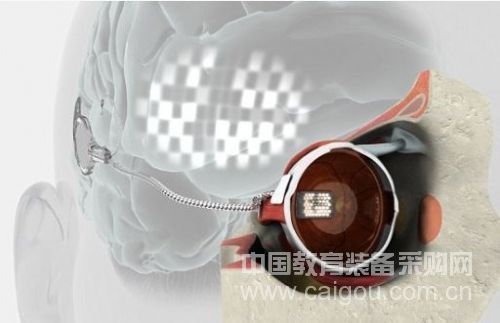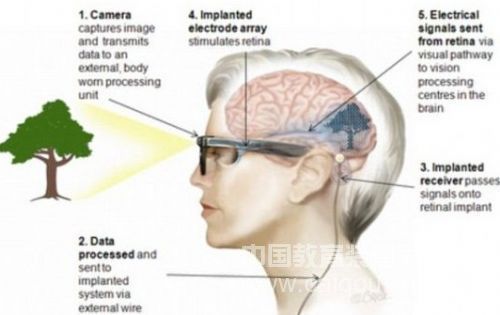
The bionic eye prototype developed by Australian Bionic Vision, the organization said on the 30th that they have successfully implanted the "world's first" bionic eye prototype

Surgeon Dr. Penny Allen (right) is examining Diane Ashworth (left), who was the first person to implant this bionic eye

Bionic eyes use special glasses to send data to an implant in the brain. The device has been successfully implanted in patients
Beijing time, September 3, according to the "Daily Mail" report, Australian blind person Diana Ashworth implanted a bionic eye to restore some vision, which indicates that scientists have successfully helped visually impaired people to restart their independent lives Another big step forward. Ashworth suffered from severely impaired vision due to hereditary retinitis pigmentosa. In May, she implanted a bionic eye prototype at the Royal Victoria Eye and Ear Hospital. The bionic eye was connected one month after the operation, and the researchers announced the postoperative results on the 30th.
Ashworth said: "It's so interesting. As soon as I turned on the bionic eye, I started to wait anxiously. I wore an eye mask and didn't know what I was expecting. I don't know if anyone really knew what I was going to see. Suddenly I felt 'yes', I could see a light, I thought it was like a small crack. I saw lines of different shapes, dark black and black and white colors intertwined. Then they turned into black patches , Surrounded by white, looks like clouds. I remember when I saw the first larger image, I exclaimed loudly: 'Wow!' This is because I never dared to expect This result is incredible. "
The Bionic Vision Australia, a research institution funded partly by the Australian government, designed, manufactured and tested this bionic eye. It has 24 electrodes, which are connected to the receptor attached to the back of the ear through a small wire that extends from the back of the eye. It is implanted in the choroidal space near the retina of the eye. Dr. Penny Allen, a surgical expert involved in implanting the bionic eye, said: "The device stimulates the retina with electricity. Electrical pulses pass through the device to stimulate the retina. These pulses are then transmitted back to the brain to generate images." The device allows patients Restores light vision, distinguishing light and dark contrasts and edges of light and black objects. The researchers hope to further improve the device so that blind patients can achieve independent living.
Allen said: "Aschworth is the first of three patients to implant this prototype device. The next step is to analyze the visual information generated by the stimulus we collected. This operation is very simple, Therefore, ophthalmologists all over the world can learn. â€Researchers at Cornell University in New York, USA, are doing similar research. They have successfully cracked the neural code of mice (the pulse that transmits information to the brain). Researchers at this university have also developed a repair device and have successfully restored the vision of blind mice to near normal. According to the World Health Organization, approximately 39 million people worldwide are blind and 246 million have low vision. Allen said: "What we are doing is to restore the vision of different types of patients, but what we hope to do is to enable those patients with severely impaired vision to achieve independent life in the future." Earlier this year, a British research group For the first time, a similar implant was implanted, and two other patients were transplanted.
Stair Parts Casting,Casting Stair Accessory,Door Stainless Steel,Casting Stair Accessories
GUANGDONG INWIN INDUSTRIAL GROUP CO. ,LTD. , https://www.inwin1979.com